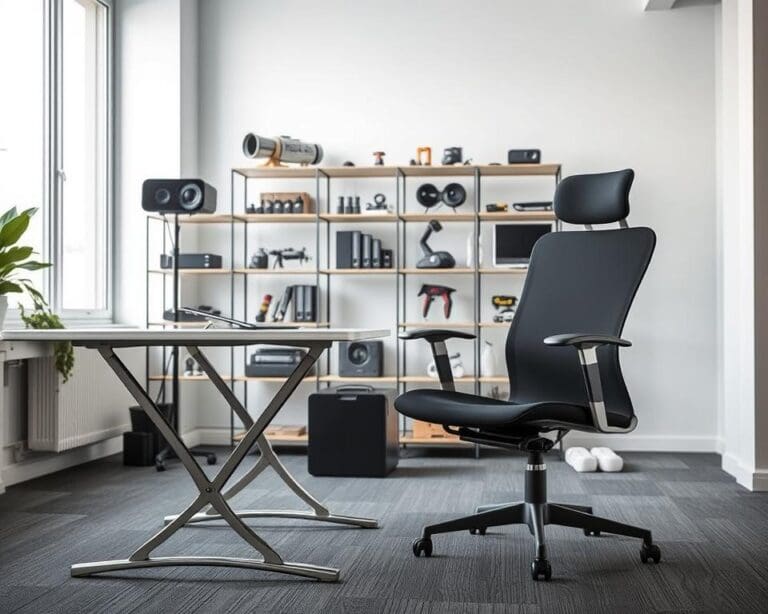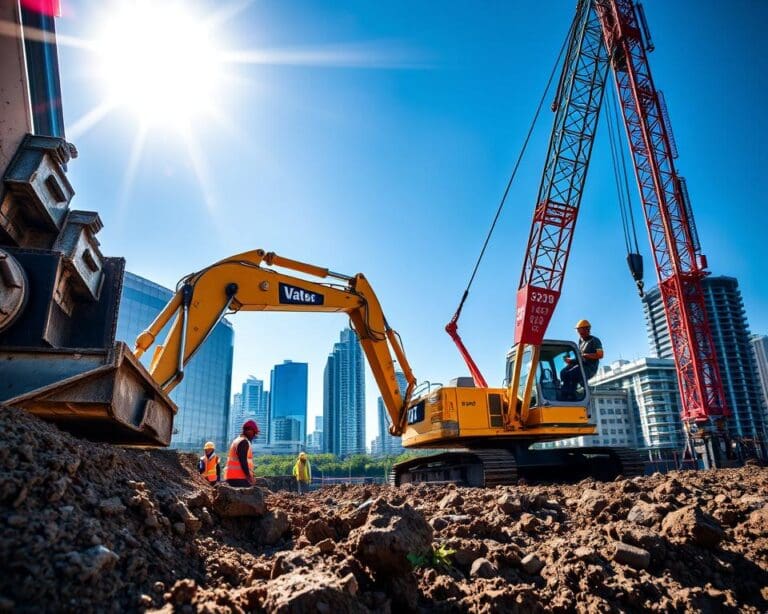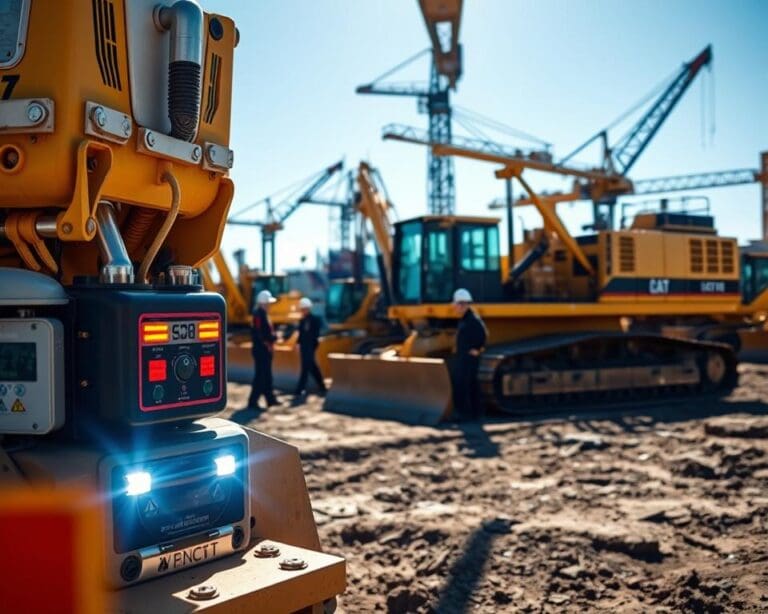As a homeowner, you’re likely looking for ways to reduce your energy bills and minimize your ecological footprint. Implementing energy-saving tips can make a significant difference. By making a few simple changes, you can save money, enhance your home’s comfort, and contribute to a more sustainable future.
One effective way to achieve this is by embracing smart home energy efficiency solutions. For instance, you can explore innovative technologies like those discussed on Goed Om Telezen, which highlights the benefits of green technology in homes. By adopting these solutions, you can optimize your energy consumption and create a more eco-friendly living space.
Key Takeaways
- Reduce energy bills by implementing smart energy-saving solutions.
- Enhance your home’s comfort with optimized temperature control.
- Contribute to a sustainable future by minimizing your ecological footprint.
- Explore innovative green technologies for your home.
- Improve your home’s energy efficiency with smart home systems.
Understanding Your Home’s Energy Profile
Your home’s energy profile is a blueprint for energy efficiency. It reveals how and where your home consumes energy, helping you identify areas for improvement. Understanding this profile is crucial for reducing energy waste and lowering your utility bills.
Common Energy Drains in American Households
Many American households suffer from common energy drains, including inefficient lighting, outdated appliances, and poor insulation. For instance, old incandescent bulbs consume significantly more energy than modern LED bulbs. Similarly, appliances that are not ENERGY STAR-rated can be major energy guzzlers.
How to Conduct a DIY Home Energy Audit
Conducting a DIY home energy audit is a straightforward process. Start by checking your home’s insulation, looking for air leaks around doors and windows, and inspecting your lighting and appliances. You can use a candle or incense stick to detect air leaks; if the flame flickers or the smoke moves, you have found a leak.
Leveraging Smart Meters and Energy Monitoring Tools
Smart meters and energy monitoring tools provide real-time data on your energy consumption, helping you understand your energy usage patterns. These tools can identify which appliances are consuming the most energy and alert you to unusual energy usage patterns, enabling you to take corrective action.
By understanding your home’s energy profile and leveraging these tools and techniques, you can make informed decisions to reduce your energy consumption and save money on your utility bills.
Smart Heating and Cooling Strategies
Effective heating and cooling are not just about comfort; they’re also about being energy-efficient. By implementing smart strategies, homeowners can significantly reduce their energy consumption and lower their utility bills.
Programmable and Smart Thermostat Benefits
One of the most effective ways to optimize your heating and cooling is by using a programmable or smart thermostat. These devices allow you to automate your temperature adjustments, ensuring that your home is not being heated or cooled when it’s not necessary.
Installation and Programming Tips
When installing a smart thermostat, it’s essential to follow the manufacturer’s instructions carefully. Programming your thermostat to adjust temperatures according to your schedule can lead to significant energy savings. For example, reducing the temperature by just one degree can save up to 3% on heating bills.
Optimal Temperature Settings by Season
The optimal temperature settings vary by season. In the winter, setting your thermostat to 68°F (20°C) when you’re home and awake, and lowering it when you’re asleep or away, can make a big difference. In the summer, keeping your home at 78°F (25°C) or higher when you’re home and raising it when you’re away can help reduce cooling costs.
HVAC Maintenance and Efficiency Upgrades
Regular HVAC maintenance is crucial for ensuring that your heating and cooling systems operate efficiently. This includes changing filters regularly, cleaning coils, and checking for any leaks or blockages. Upgrading to a more efficient HVAC system or adding components like a high-efficiency air filter can also improve performance and reduce energy consumption.
Insulation and Weatherproofing Solutions
Insulation plays a critical role in maintaining your home’s temperature, reducing the need for heating and cooling. Ensuring that your home is well-insulated, particularly in the attic, walls, and floors, can significantly reduce energy loss. Additionally, weatherproofing solutions such as sealing gaps around doors and windows, and using weatherstripping can prevent heated or cooled air from escaping.
Illuminating Energy-Efficient Lighting Options
As we strive to make our homes more energy-efficient, lighting is a key area to focus on. With various options available, homeowners can significantly reduce their energy consumption by adopting the right lighting solutions.
The LED Revolution: Savings and Benefits
LED (Light Emitting Diode) lighting has revolutionized the way we illuminate our homes. LEDs are significantly more energy-efficient than traditional incandescent bulbs, using up to 90% less energy. They also last longer, reducing the need for frequent replacements.
Smart Lighting Systems and Automation
Smart lighting systems offer advanced control over lighting usage, allowing homeowners to automate lighting schedules and adjust brightness levels. This not only enhances convenience but also contributes to energy savings.
Maximizing Natural Light in Your Home
Maximizing natural light is another effective way to reduce reliance on artificial lighting. Simple strategies include using mirrors to reflect natural light, keeping windows unobstructed, and using light-colored paints on walls.
Strategic Lighting Placement and Usage
Strategic placement of lighting fixtures and using dimmers can also help reduce energy consumption. By focusing light where it’s needed, homeowners can minimize waste.
| Lighting Type | Energy Consumption | Lifespan |
|---|---|---|
| Incandescent | High | 1,000 – 2,000 hours |
| LED | Low | 15,000 – 50,000 hours |
| Smart LED | Low | 15,000 – 50,000 hours |
Hot Water Solutions That Save Energy
When it comes to saving energy, one often overlooked area is the hot water system in your home. Efficient hot water solutions can significantly reduce your energy consumption and lower your utility bills.
Tankless vs. Traditional Water Heaters
Tankless water heaters, also known as on-demand water heaters, heat water directly without the use of a storage tank. This can be more energy-efficient than traditional water heaters, which constantly heat water in a tank. Tankless water heaters can provide hot water on demand and may reduce energy waste.
Water Heater Temperature Optimization
Optimizing your water heater temperature is a simple yet effective way to save energy. Setting the temperature to 120°F (49°C) can be sufficient for most households, reducing energy consumption without compromising comfort.
Insulating Water Systems for Efficiency
Insulating your water heater and pipes can help reduce heat loss and improve the overall efficiency of your hot water system. Using insulation wraps on your water heater and pipes can be a cost-effective solution.
Low-Flow Fixtures and Water-Saving Habits
Installing low-flow fixtures such as showerheads and faucets can significantly reduce hot water usage. Adopting water-saving habits, like taking shorter showers, can also contribute to energy savings.
By implementing these hot water solutions, homeowners can enjoy a more energy-efficient home while reducing their environmental footprint.
Wat zijn slimme tips voor energiebesparing? Kitchen Edition
By focusing on energy-efficient practices in the kitchen, homeowners can enjoy significant savings on their energy bills while contributing to a more sustainable environment.
Energy-Efficient Cooking Techniques
One of the simplest ways to save energy in the kitchen is by adopting efficient cooking techniques. Using the right size pot for the burner, keeping lids on pots, and cooking with microwave or toaster oven instead of the full-sized oven can make a big difference.
Tips for Energy-Efficient Cooking:
- Use residual heat by turning off the stove before you’re done cooking.
- Thaw frozen foods in the refrigerator or cold water instead of the microwave.
- Match pot size to burner size.
Refrigerator and Freezer Optimization
Optimizing your refrigerator and freezer can lead to significant energy savings. Regular maintenance, such as cleaning condenser coils and checking door seals, is crucial.
Temperature Settings and Maintenance
Ensure your refrigerator is set between 37°F and 40°F (3°C and 4°C), and your freezer is at 0°F (-18°C). Regularly cleaning the condenser coils can improve efficiency by up to 30%.
Strategic Food Storage Practices
Store food in airtight containers to maintain freshness and allow for more efficient air circulation.
Dishwasher Efficiency and Alternative Cleaning Methods
Running a full load in the dishwasher is more energy-efficient than washing dishes by hand. However, when you do wash by hand, use a basin and minimal hot water.
| Dishwashing Method | Energy Consumption | Water Usage |
|---|---|---|
| Dishwasher (full load) | 1.3 kWh | 6 gallons |
| Washing by Hand | N/A | up to 27 gallons |
Small Appliance Management Strategies
Small appliances like toasters and coffee makers can be energy-efficient alternatives to larger appliances for certain tasks. Unplugging them when not in use can prevent standby power consumption.
Leveraging Smart Home Technology
The integration of smart home technology into daily life offers numerous benefits, including significant energy savings. By harnessing the power of smart devices, homeowners can monitor, control, and optimize their energy usage more effectively than ever before.
Comprehensive Home Energy Management Systems
A comprehensive home energy management system provides a unified platform to monitor and control various smart devices within the home. This can lead to more efficient energy use and cost savings. For instance, systems like Home Assistant or OpenHAB offer robust solutions for integrating multiple smart devices.
Smart Plugs, Strips, and Energy Monitors
Smart plugs and strips are simple yet effective tools for making any device smart. By plugging devices into these smart strips, homeowners can control them remotely and monitor their energy usage. Check out how much you can save with smart. Energy monitors provide real-time data on energy consumption, helping identify areas for improvement.
| Device | Function | Energy Saving Potential |
|---|---|---|
| Smart Plugs | Control devices remotely | Up to 10% on standby power |
| Smart Strips | Manage multiple devices | Up to 15% on peripheral devices |
| Energy Monitors | Monitor energy usage | Up to 5% through awareness |
Voice-Controlled Energy Conservation
Voice-controlled smart speakers like Amazon Alexa and Google Assistant can be integrated with various smart home devices, allowing for voice control over lighting, heating, and other appliances. This can lead to more convenient and efficient energy management.
Creating Automated Energy-Saving Routines
Automated routines can be set up to perform multiple actions with a single command or automatically based on certain triggers. For example, a “Good Night” routine could lock doors, turn off lights, and adjust the thermostat with a single voice command, ensuring that energy is not wasted when it’s not needed.
By leveraging these smart home technologies, homeowners can create a more energy-efficient home environment. The key is to find the right balance between convenience, cost, and energy savings.
Combating Phantom Energy Waste
Many homes unknowingly waste energy on devices that are turned off but still plugged in. This phenomenon, known as phantom energy waste or standby power consumption, can account for a significant portion of your household’s energy usage. Devices such as TVs, computers, and phone chargers continue to draw power even when turned off, contributing to increased energy bills and unnecessary environmental impact.
Identifying Hidden Energy Vampires
The first step in combating phantom energy waste is to identify the culprits. Common energy vampires include:
- Televisions and entertainment systems
- Computers and peripherals
- Phone chargers and other small appliances
- Gaming consoles
To detect these hidden energy drains, you can use a simple plug-in power meter or a smart power strip that can measure the energy consumption of devices.
Effective Solutions for Standby Power Consumption
Once you’ve identified the energy vampires, there are several strategies to reduce their impact:
- Unplug devices when not in use: This is the simplest way to eliminate standby power consumption.
- Use smart power strips: These can automatically cut power to devices when they’re not in use.
- Enable energy-saving features on your devices.
Creating Family Energy Awareness Habits
Educating your family about the importance of energy conservation can significantly reduce phantom energy waste. Encourage habits such as turning off lights and electronics when not in use.
Energy-Saving Habits When Away from Home
When you’re away from home, there are still ways to save energy. Consider:
- Adjusting your thermostat remotely
- Using smart home devices to monitor and control energy usage
- Unplugging sensitive electronics to protect them from power surges
By implementing these strategies, you can significantly reduce phantom energy waste and contribute to a more energy-efficient home.
Seasonal Energy-Saving Techniques
Understanding how to adapt our energy consumption to the changing seasons is key to reducing our overall energy expenditure. By implementing seasonal energy-saving techniques, homeowners can significantly lower their utility bills while contributing to a more sustainable environment.
Summer Cooling Without Breaking the Bank
Summer is a time when cooling costs can skyrocket, but there are several strategies to keep your home cool without overspending. Using ceiling fans and smart thermostats can make a big difference. Ceiling fans circulate air, making rooms feel cooler, while smart thermostats optimize your air conditioning usage. Additionally, planting trees or installing awnings can help block direct sunlight, reducing the need for air conditioning.
- Use ceiling fans to circulate air and reduce AC usage.
- Install smart thermostats for optimized cooling.
- Plant trees or install awnings to block direct sunlight.
Winter Warmth on a Budget
During the winter, maintaining warmth without high energy bills requires some strategic planning. Ensuring your home is well-insulated is crucial, as is using programmable thermostats to lower the temperature when you’re not home or when you’re sleeping. Using thick curtains or drapes can also help keep warmth in and cold out.
- Ensure your home is well-insulated to prevent heat loss.
- Use programmable thermostats to optimize heating.
- Utilize thick curtains or drapes to keep warmth in.
Spring and Fall Transition Strategies
During the spring and fall, the mild weather offers a great opportunity to adjust your energy-saving strategies. By opening windows for cross-ventilation during these seasons, you can reduce the need for both heating and cooling. Maintenance of your HVAC system is also crucial during these transition periods to ensure it’s ready for the extreme temperatures of summer and winter.
Cross-ventilation can significantly reduce the need for mechanical cooling and heating. Simply opening windows on opposite sides of your home can create a cooling breeze, reducing the need for air conditioning in the spring and fall.
Holiday Season Energy Management
The holiday season, particularly around Christmas and New Year’s, can lead to increased energy usage due to lighting and other decorations. To manage this, consider using LED lights, which consume significantly less energy than traditional incandescent bulbs. Automating your holiday lights with timers can also help ensure they’re not left on unnecessarily.
- Use LED lights for holiday decorations.
- Automate your holiday lighting with timers.
- Consider the energy efficiency of your holiday displays.
Conclusion: Building a Sustainable Energy Future
As we’ve explored throughout this article, there are numerous ways to save energy and reduce your utility bills. By understanding your home’s energy profile, leveraging smart heating and cooling strategies, and implementing energy-efficient lighting and hot water solutions, you can make a significant impact on your energy consumption.
Building a sustainable energy future requires a multifaceted approach. By incorporating energy-efficient practices into your daily routine, such as using smart home technology and combating phantom energy waste, you can contribute to a more energy-efficient world. As you implement these strategies, you’ll not only reduce your energy consumption but also lower your utility bills, creating a win-win situation for both you and the environment.
By embracing energy efficiency and working towards a sustainable energy future, we can create a better tomorrow for generations to come. Start your energy-saving journey today and make a positive impact on the environment while enjoying the benefits of reduced energy costs.













